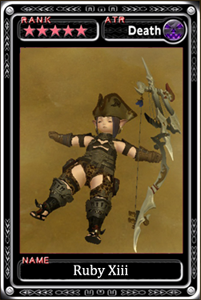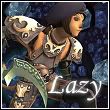Pretty much everything in FFXI is based off of some sort of mythology.
Quote:
According to ancient Chinese astronomy, the sky was divided into four quadrants, each quadrant representing a season of the year. These quadrants are then each divided into 28 different segments, called "seishuku". The quadrants themselves are associated with colored animal deities that serve as guardians. These are Suzaku the Red Bird, Seiryu the Blue Dragon, Genbu the Black Tortoise or Warrior, and Byakko the White Tiger. The unique circular formation of the quadrants and constellations has many different explanations. One is based off of an ancient Chinese creation myth about a goddess (Nu Kwa) who had, in the course of a divine war with rival deities damaged one of the "pillars" holding up the sky, causing water to pour from it onto the land and the horizon to become lopsided. In order to stabalize things, she rebuilt the square-like "pillar" using colored stones that shone in the night sky, and placed four guardians in each corner of it, in order to keep it from collapsing. Another explanation concentrates more on the "time" application of the Four Gods formation. The moon's orbit was used by the ancient Chinese to measure the passing of seasons, each season represented by a guardian in the sky. It was believed that the moon passed one of the constellations ("seishuku") every few days, and that it took the passing of all 28 constellations to complete a full orbit of the moon, and therefore of all the seasons. Each season was thus represented by the four guardian deities mentioned before.
Speaking of the Four Gods, let's take a closer look at them and the "seishuku" that comprise them:
Seiryu, Blue Dragon of the East (Spring): Seiryu is the Eastern part of the quadrant, and one which is represented by a Dragon. While at times the color of Spring is usually green, Seiryu is depicted as a blue Dragon in part because Dragons were thought of by the ancient Chinese to be aquatic creatures that reside in the sea. Spring is also thought of to be a rainy season, so the color blue is also indicative of water. As one of the oldest, most powerful, and respected of all Chinese mythological creatures, the dragon was usually symbolic of authority and strength, and was usually worn as such by major figures of power or the royalty (Nakago even wears what could be seen as a Dragon's Claw for a shoulder plate). The seven "seishuku" that make up Seiryu are: Nakago (heart), Soi (chamber), Ashitare (tail), Suboshi (horn), Amiboshi (throat), Miboshi (basket), and Tomo (root).
Suzaku, Red Bird of the South (Summer): Suzaku is the Southern part of the quadrant, and one which is represented by a Bird (though in the story, Suzaku does hint at having properties of the legendary Phoenix which is known to die in its own flames and be reborn anew). Because of its association with the heat and fiery temperatures of summer, Suzaku is usually red in color, and may contribute to some people's conclusion that Suzaku is more like the phoenix than an ordinary bird. Red also has connotations of being a color associated with romance and love, and in the series it is from love that Suzaku draws his strength. Suzaku has a multicolored plume like a peacock's, and is meant to emphasize its rarity and beauty, as well as its virtue as a guardian deity. The seven "seishuku" that make up Suzaku are: Tamahome (ogre), Hotohori (star), Chichiri (well), Nuriko (willow), Chiriko (net), Tasuki (wings), and Mitsukake (sadness).
Byakko, White Tiger of the West (Fall): Byakko is the Western part of the quadrant, and one which is represented by a Tiger. Tigers in Chinese mythology represent ferocious defense like metal or steel when it comes to soldiering. They were also considered to be natural guardians and the king of all animals (and thus their protector). The white color is possibly from an original myth that stated that a piece of metal left behind at a king's grave supposedly turns into a white tiger to guard it from being defiled. White can also be a part of the symbolism of autumn, as things are still alive, but are growing "old" and gray at this time of the year. The members of the Byakko Seven that are present in the series encounter age as a determining factor in bringing out their full potential, and Subaru's age-reversing magic is possibly a nod to the whole "age" association with the color of Byakko. The seven "seishuku" that make Byakko are: Subaru (unity), Tokaki (foot), Tatara (lasso), Kokie (stomach), Amefuri (net), Toroki (snout), Kagasuki (investigator 3),
Genbu, Black Tortoise of the North (Winter): Genbu is the Northern part of the quadrant, and one which represented by a Tortoise or Turtle (though this particular constellation may also be called the "Black Warrior". The Tortoise is representative of endurance, wisdom, and longetivity, and is also sometimes used in terms of divination. Though in the series Genbu is shown to be greenish in color, its real color is black, due to the fact that Winter was perceived to be the twilight or end of the seasons. Because of its Winter theme, it appears that members of the Genbu Seven have a mastery or attuning to cold. Hikitsu and Tomite are two such members with these powers. The seven "seishuku" that make Genbu are: Hikitsu (dipper), Tomite (emptiness), Inami (cow), Uruki (woman), Umiyame (rooftop), Hatsui (room), and Namame (wall)






























